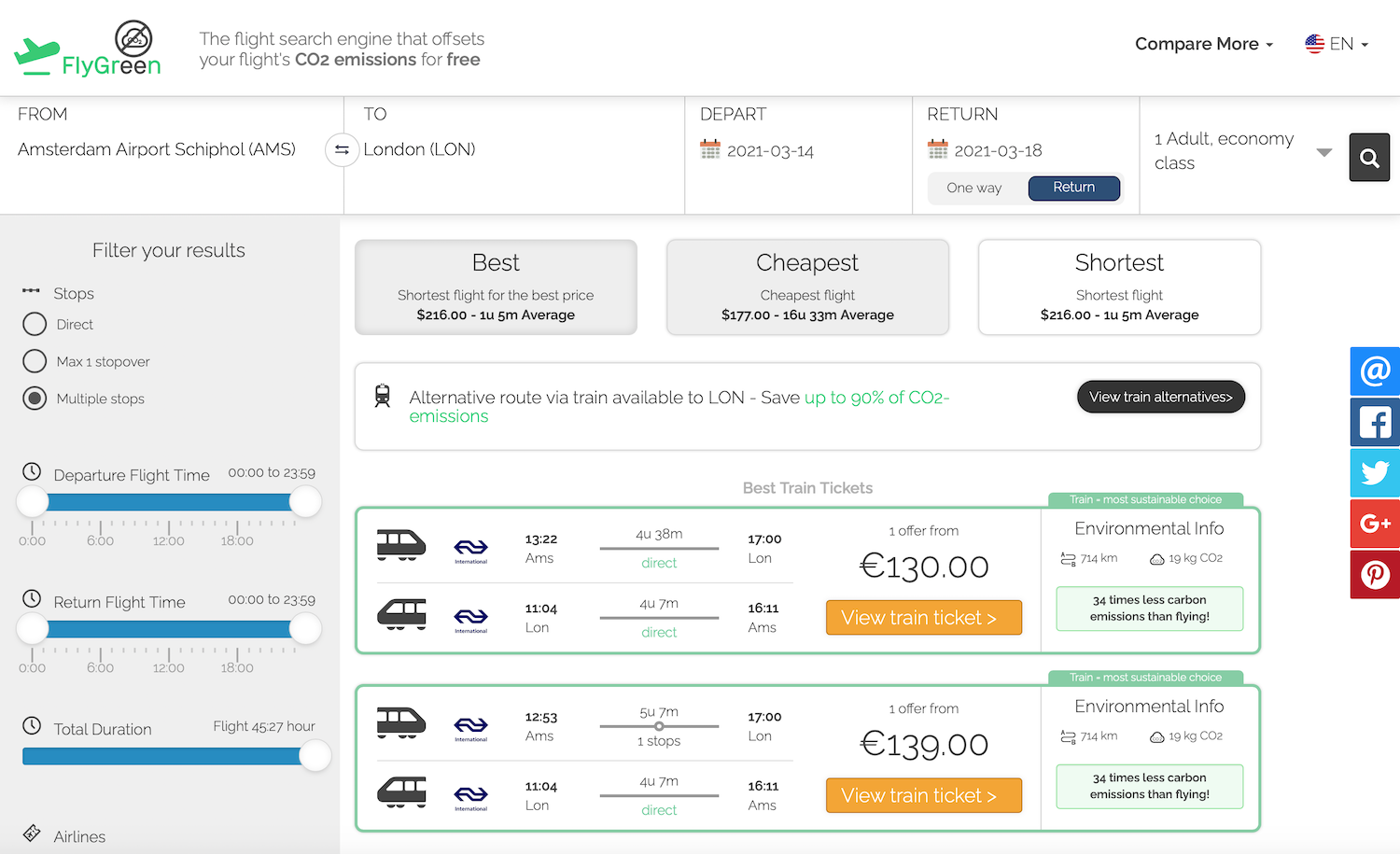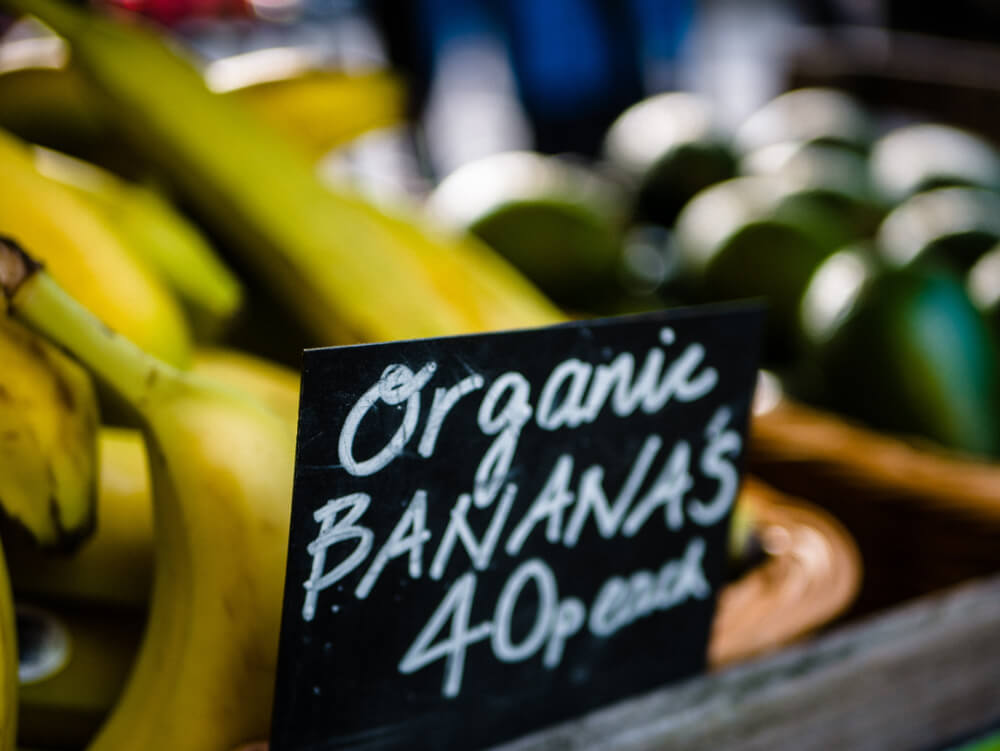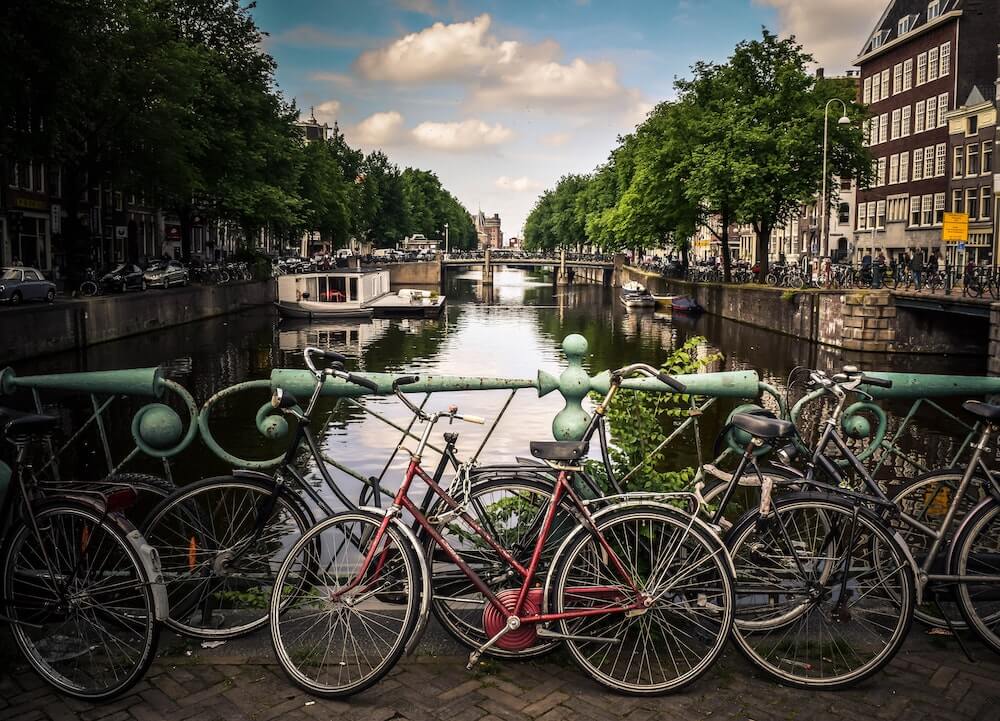We have written a lot about sustainable travel tips, but there are plenty of things you can do at home to live a sustainable life as well! Living sustainably has lots of benefits. The choices that you make at home aren’t only better for the environment, but also for your bank account and your health. Sustainable living means simplifying your life. And that is the key to happiness. In this article, I will give you ten easy tips that you can start with today.
Why choose a sustainable life?
Maybe you already know that it is good to recycle, reduce your use of plastic, save energy and reduce your CO2 emissions. That is a great start.
But did you also know that the average temperature on Earth has increased by 0.8° Celsius, compared to the temperature before the Industrial Revolution? If we don't get our CO2 emissions in check, the Earth will only warm up more. This will have huge consequences for the environment, our flora and fauna, and our own wellbeing.
How can you live sustainably?
Sustainable living does not mean that you have to live an uncomfortable life. It means that you consciously think about the stuff and the energy that you use, and about the choices you make every day.
Sustainable living tips
There are many simple, effective ways to live a more sustainable life. Here are ten green living.
1. Eat more plants and less meat
Effective ways to be reduce carbon according to a Swedish scientific article
An average western diet leads to an emission of about 2.5 tons of CO2 per person per year. For a meat lover, this amounts to 3.3 tons of. The latter is quite similar to a return trip to Amsterdam-Singapore. So if you don’t eat meat, you will save a lot of CO2 emissions a year.
That seems simple, but it’s not. If you think you are doing the right thing by eating vegetarian burgers made of milk and eggs, think again. The milk industry also has a negative impact like the meat industry. If you want to have the most sustainable impact, go vegan. A vegan diet is equivalent to 1.5 tons of CO2 per person per year. That's less than half the CO2 emissions of the diet of a meat eater!
So if you fly three times a year to a European city, or once a year to a far-away place, you'll soon reach 1.5 tons of CO2 per person per year. In order to compensate for that with your diet, you have to start changing eating plants.
2. Choose the train when travelling close to home
We probably don’t need to tell you that travelling by air is one of the most polluting ways to get to your destination. Sometimes there is no other way though - especially if you need to travel to the other side of the world and you don’t feel like spending 3 weeks on a ship.
But if you do have the time, or your destination is close to home, consider taking the train or the boat. Usually, travelling by train or by boat is better for the environment than car or air travel. For example, a one-way flight from London to Madrid emits about 118 kg of CO2 per passenger, but 43 kg by train.
These 118 kg of CO2 equals about 292 laundry washes, 100 showers of 10 minutes, and 107 days of watching TV. Find out how much CO2 your flight emits with FlyGRN’s Carbon Footprint Calculator.
Travelling by train or by boat isn’t only better for the environment, but it can also be such a fun adventure! You’ll meet more people, see more, and have a totally unique experience. This even applies to your daily commute to work - as long as you take the opportunity to connect with other people. Want to travel through Europe? Go InterRailing! Europe has a perfect network of trains and you can discover 40,000 destinations (including France, Germany, Italy, and Switzerland) on one pass.
Did you know that when you compare flights on FlyGRN, we will also show train alternatives from our partner NS International? If you search a flight from Amsterdam to London, we also search for train alternatives.

If you search for flights at FlyGRN, we also try to show more sustainable alternatives, like the train.
3. Choose eco-friendly toiletries

Sanitary items are mostly made from non-organic cotton, which is a highly pesticide-intensive crop and causes soil degradation. Farmers are using huge quantities of pesticides, fertilisers, and chemicals. And the production of fertilisers uses finite energy sources, which releases considerable amounts of CO2. As soils normally capture carbon dioxide, soil degradation reduces this capacity - increasing global warming. Plus, all of those sanitary items finally end up somewhere in a landfill or in the ocean. It is time to make a change. Take a look at these tips.
“Naked” soaps and shower products. These products are eco-friendly produced and they don’t come in a plastic wrapper or box. This is what you call solid toiletries. One of the biggest brands that produce these products is Lush. You can find anything you need: toothpaste, shampoo, conditioner, soap, perfume. All high-quality, mostly plastic-free products
Eco-friendly sanitary products. A topic that most people don’t immediately think of when trying to reduce plastic waste. But if you figure that in the US alone people buy 5.8 billion tampons a year (based on 2018), that is a LOT of plastic waste that ends up in landfills and the ocean. Tens of thousands of tampons, pads, and applicators wash up on the shore every day. Reason enough to switch to eco-friendly sanitary products, such as menstrual cups or washable period pants.
Organic, reef safe suncream. Most suncreams contain harmful substances, including oxybenzone and octinoxate, which hurt coral reefs and marine life. Unfortunately, these are not the only substances that are harmful to marine life. The problem is that much of the suncream that ends up in the ocean is concentrated at popular beaches. So even better is to cover yourself up with proper swimwear or a T-shirt so you need to use less suncream when you enter the ocean.
4. Buy less & install TreeClicks, the free tree planting app

The biggest impact we have on the environment is because we are constantly buying new things. You may not immediately see why this is so polluting (other than it ending up as waste somewhere). But that's because 92% of the impact of new stuff is ‘hidden".
This hidden impact is mainly a result of the production and transport of these items. Think of the CO2 emissions from factories in China that produce our goods, the use of water and land, pollution, deforestation, and the impact all of this has on biodiversity.
A simple way to reduce our (hidden) impact on the environment is simply to buy less. By minimising, you can make your life at home a lot more sustainable.
And if you do need new stuff, then use the free TreeClicks plugin. With this plugin, you contribute to tree planting projects when you shop. Why trees? Well, they store CO2, produce oxygen and have many other environmental benefits. So far, more than 50,000 shops have joined the plugin, including Amazon.com. Most of the commission that TreeClicks gets from a shop when you buy something, is used to plant trees.
And yes, TreeClicks is also available for iOS and Android, making free tree planting even easier.
5. Check sustainable labels and certifications

There is a lot of certifications to choose between. But which one should you look for? Check out this list of WWF approved food certifications to see more of the logos you should look for on labels.
You can also check the sustainability of the supermarket products you buy using a smartphone app like CodeCheck: Food and Cosmetic Product Scanner or the Sustainable Palm Oil Shopping Guide. Users in the UK should also take a look at the Giki app. All three of these apps have built-in barcode scanners so you can find out the sustainability rating of items as you shop.
Choosing products that have a limited effect on the environment and local communities encourages sustainable practices amongst producers and manufacturers as well as reducing your own individual impact on the planet.
6. Reuse & repurpose

We need to reduce the amount we consume. We also need to reuse and repurpose as part of our day to day lives. There are a number of ways to achieve this.
We can reuse by buying second-hand items from thrift shops and flea markets. Take the example of clothing. Extending the lifespan of clothes by just three months reduces the item’s carbon, water and waste footprint by 5 to 10%. Imagine the difference we’d make if we continued wearing second-hand clothes for many years after they’d been given up by their original owner!
Giving items a second life, either by buying second-hand, donating unwanted items to charitable organisations or selling your things on platforms like Facebook Marketplace and eBay, helps to reduce the amount of stuff going to landfill.
It’s also possible to rent the items you use less frequently. You can find DIY tools, party decorations, sporting equipment and even musical instruments available to hire at websites like Fat Llama and Rentything. As well as renting from others, consider renting out your things. Advertise belongings you have just sitting around in the attic or the garage and you could help to create a reuse revolution!
When it comes to items you already own, think twice before you throw anything away. If something is broken, try to fix it. Or if it’s beyond repair, give it another use. A worn-out cotton t-shirt works well as a duster. A pallet can be repurposed as a garden planter. Newspaper can be used to wrap presents.
We should all be aiming to reuse and repurpose our food leftovers too. Whenever we put food into the bin, we waste the resources that were used to grow it. Growing just one apple takes 125 litres of water! So it’s so important that we address food waste at home. Get creative in the kitchen, find recipes that use leftovers and try to avoid wasting anything.
7. Go camping and have a “staycation”

Are you the outdoorsy type? Then the idea of camping isn’t too hard to sell to you. But even if you are not a fan of outdoor toilets and sleeping bags, camping can be done in many different ways. You can choose to go on a “staycation”: a vacation in your own home (country) and camp in your own backyard! Or, if you do want to explore your home country a bit more, check out these eco-friendly holiday destinations in Europe that are perfect for camping.
Not only is camping better for the environment (compared to some eco-unfriendly hotels), but it also saves you a lot of money and it is amazing for your mental and physical health:
- Being outdoors makes you disconnect. No distractions from your phone, laptop or tv. Social media can lead to feelings of anxiety and insomnia. Unplug your devices and reconnect to nature!
- Nature does wonders for your mood. It reduces depressive symptoms and negative thinking. The fresh air, the forest, mountains or ocean are nature’s best anti-depressants.
- Camping is great to improve your fitness level. You can go hiking, hop on a mountainbike, go swimming or do some other activity that you are less likely to do in a hotel.
We even have put together a dedicated list of sustainable travel tips.
8. Live car-free

Did you know that transport accounts for a quarter of the world’s CO2 emissions. And it’s not just planes! Cars, trucks, buses and motorbikes account for three quarters of the CO2 emissions produced by transport.
For many people, a car is an essential. If you don’t live on a good public transport route and you have to travel a reasonable distance to work, travelling by car is the obvious solution. However, we should all be seeking alternatives to car travel whenever possible. Using public transport, cycling or walking are all much better for the environment and an easy option for shorter journeys.
We should encourage our employers to offer home working opportunities, at least for a few days a week. This would drastically cut the carbon emissions produced by a commute to work. And if that isn’t an option, ride sharing with others travelling to the same location is another way to take cars off the road.
If you switch to an electric car or manage to live car-free, you’ll save more than one ton of CO2 per year!
9. Grow your own

Growing your own garden can be incredibly rewarding. Even if you don’t feel particularly green-fingered you can easily get started with a couple of planters or window boxes. Trees and plants reduce the amount of carbon in the atmosphere. They also provide habitats and food for a huge range of animals and insects.
Choose native and bee-friendly plants wherever possible. These are plants that grow naturally in your country or region and, as a result, are best suited to the local wildlife and weather conditions.
Growing your own food has even greater benefits for the environment. Any fruit and vegetables you produce will have a much lower carbon footprint than food you can buy in the supermarket. Food has to travel a very short distance from soil to table, reducing the carbon emissions involved in food transportation. There is no plastic packaging to consider. And you get to be in complete control of the way food is grown, avoiding harmful fertilizers and pesticides.
10. Conserve energy & water at home
There are lots of easy ways to make your home more sustainable. Switching to renewable energy is much easier than you might think and a great first step. A number of energy suppliers now offer 100% renewable electricity. The best will also offset the carbon impact of their gas supply. Be sure to do your research on suppliers and get to know their eco-friendly credentials. Companies want to be seen as “green” but not all of them are living up to the title.
Next, it’s time to look at how to use that energy as efficiently as possible. When it comes to heating or cooling your home, be as sparing as possible. Put on a jumper instead of turning up the thermostat and open a window rather than using the air conditioning. Insulation is another key factor. Making sure heat isn’t escaping from you home - from walls, windows or the roof - is really important.
Choosing energy efficient appliances is another good way to make your home more eco-friendly. Here are a few other ideas:
- Use energy efficient LED lightbulbs.
- Don’t leave electrical appliances on standby.
- Make sure the washing machine is full before using it.
- Dry clothes on a washing line rather than in the dryer.
- Collect rainwater in a water butt and use this to water the garden.
- Choose a toilet with a dual flush.
- Install a water-saving shower head.
These home and lifestyle changes may seem small but every little bit we do for the environment helps to make a difference.
Summary of the best sustainable living tips
So in our opinion, the best sustainable living tips are:
- Eat more plants and less meat
- Choose the train when travelling close to home
- Choose eco-friendly toiletries
- Buy less & download TreeClicks
- Check sustainable labels
- Reuse & repurpose
- Go camping and have a “staycation”
- Live car-free
- Grow your own
- Conserve energy & water at home
Interested in learning more about how to live a sustainable life at home - and on the road? Find out how you can reduce your waste at home and while travelling.
What are your sustainable living tips?
Author: Jessica Scheper



